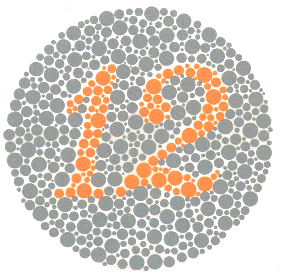Color Blindness TestRead 870,636
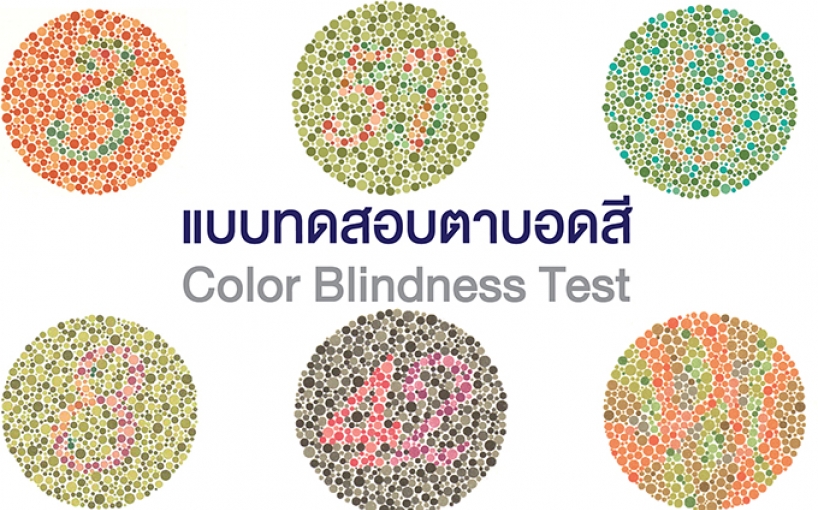
Color blindness can occur when one or more of the cone types are not functioning as expected. Cones can be absent, nonfunctioning or detect a different color than normal. Red-green color blindness is the most common, followed by blue-yellow color blindness. Men are more likely to have color blindness than women.
Many birds, insects and fish have four types of cones. With their different cones, they can see ultraviolet light. Ultraviolet light has wavelengths shorter than what the human eye can see. Other animals, such as dogs, have fewer types and numbers of cones, so they may see fewer colors than humans do.
Many birds, insects and fish have four types of cones. With their different cones, they can see ultraviolet light. Ultraviolet light has wavelengths shorter than what the human eye can see. Other animals, such as dogs, have fewer types and numbers of cones, so they may see fewer colors than humans do.
Color Blindness Diagnosis and Treatment
Your ophthalmologist will be able to conduct a simple test to determine if you have color blindness.
The test consists of showing you a pattern made up of multi-colored dots. If you do not have a color deficiency, you will be able to see numbers and shapes among the dots. If you are color blind, you will have a hard time finding the number or shape in the pattern. You may not see anything in the pattern at all.
There is no treatment for congenital color blindness. It usually does not cause any significant disability. However, there are special contact lenses and glasses that may help.
Your ophthalmologist can treat acquired forms of color blindness. He or she will address the underlying condition or drug that caused the problem.
Color Blindness Test
Answer: 12. Even if your're color blind, you will get this one right.
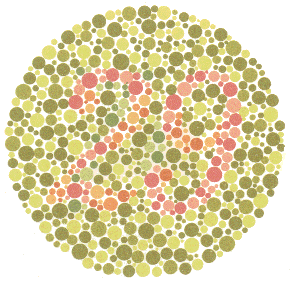

Answer: 29.
Red-Green deficiency will see a 70.
Color bliind will see nothing.
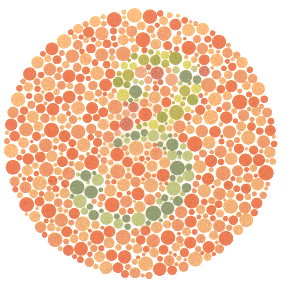
Answer: 3.
Red-Green deficiency will see a 5.
Color bliind will see nothing.
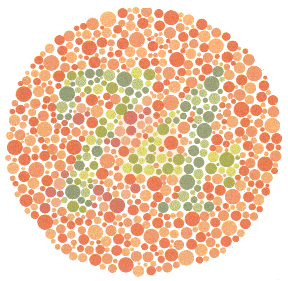

Answer: 74.
Red-Green deficiency will see a 21.
Color bliind will see nothing.
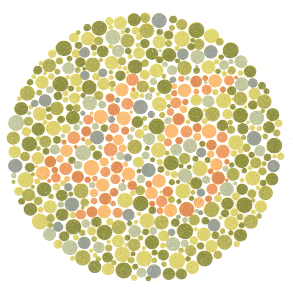
Answer: 45.
Color bliind will see nothing.
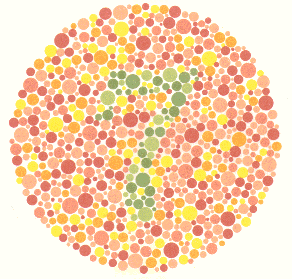

Answer: 7.
Color bliind will see nothing.
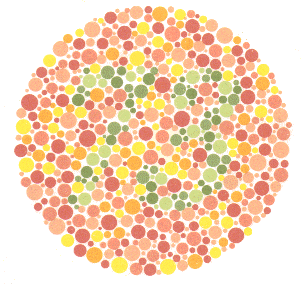
Answer: 73.
Color bliind will see nothing.
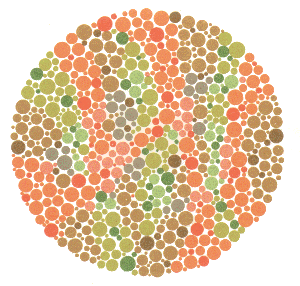
Normal eye will see nothing.
Red-Green deficiency will see a 45
Color blind will see nothing.
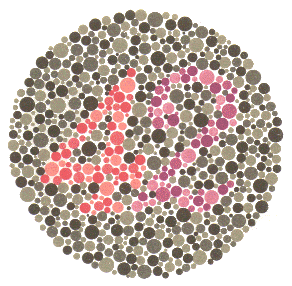
Answer: 42.
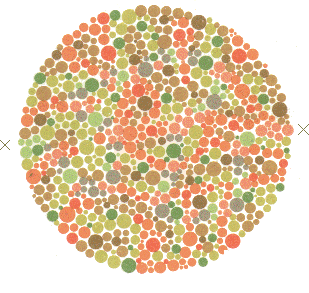
Normal eye cannot draw a line from X to X.
Red-Green deficiency can draw a line from X to X.
Color blind cannot draw a line from X to X.
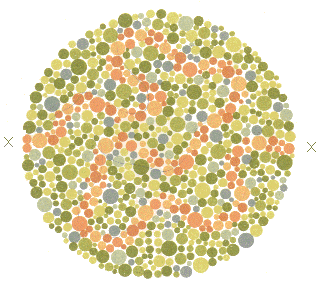
Normal eye can draw a line from X to X.
Color blind cannot draw a line from X to X.
Reference:
American Academy of Ophthalmology



